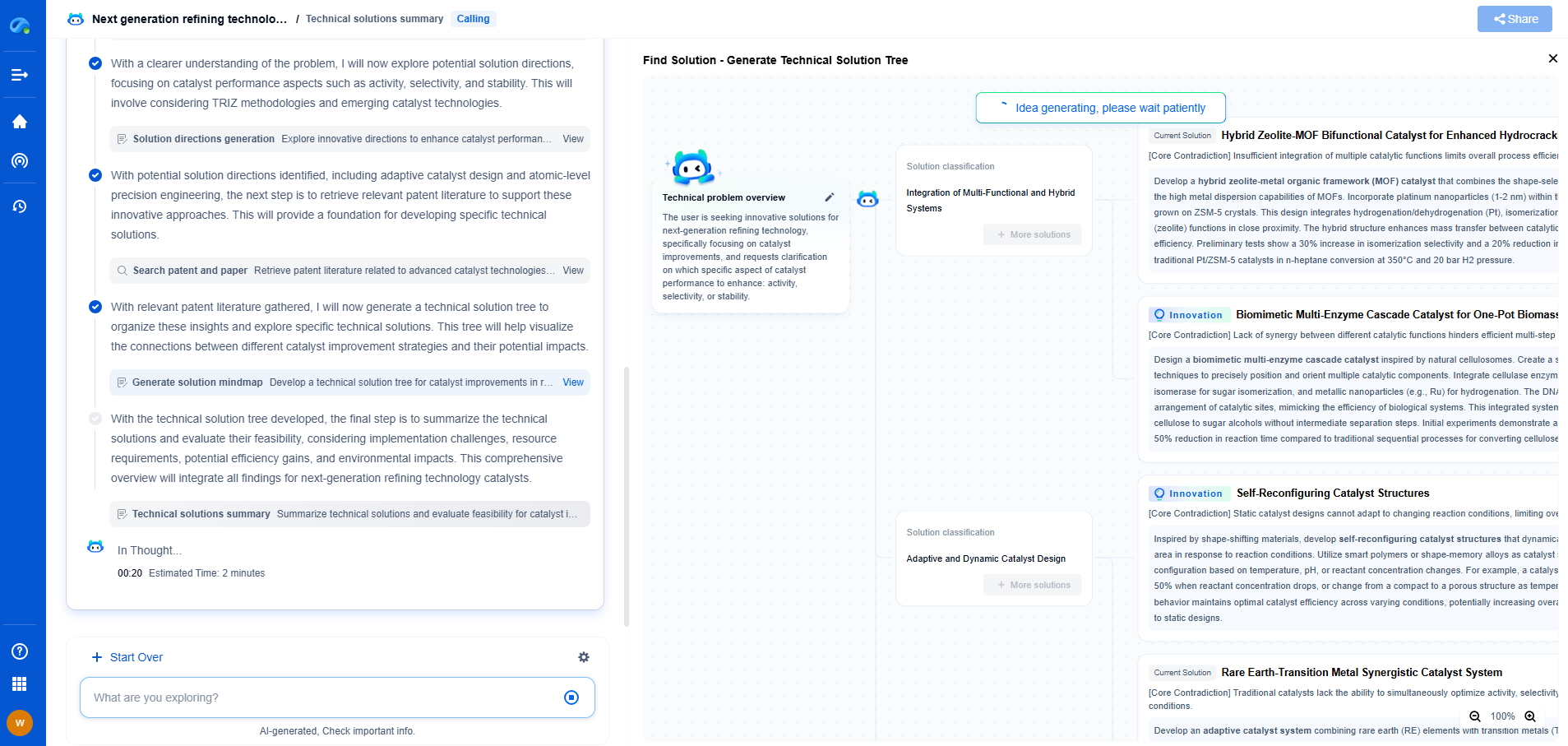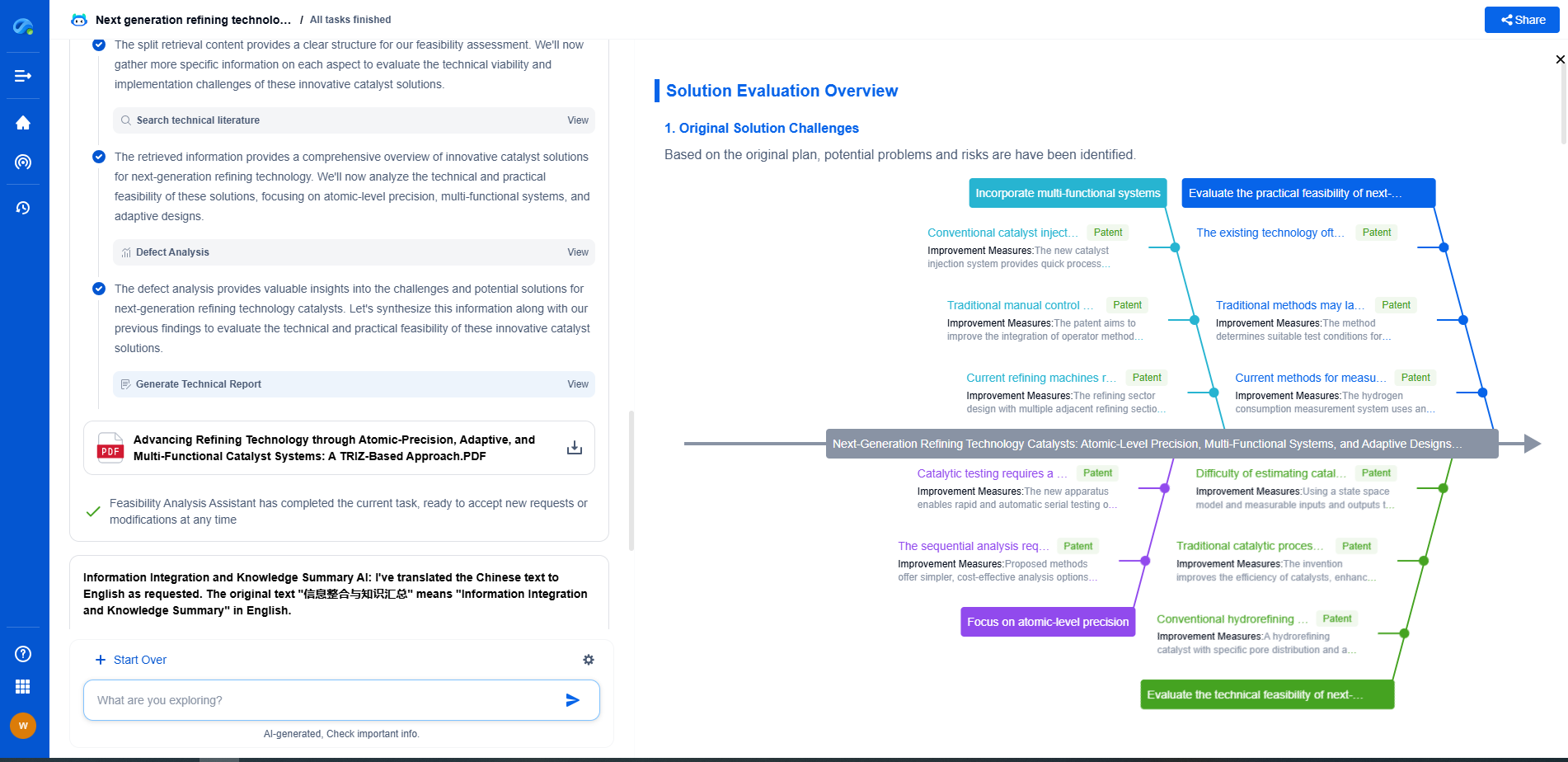What is dual-gradient drilling and how does it improve deepwater operations?
JUN 20, 2025 |
In recent years, the exploration and extraction of oil and gas from deepwater environments have pushed the boundaries of technology and innovation. One such technological advancement is dual-gradient drilling (DGD), a cutting-edge technique that offers numerous benefits over traditional drilling methods. To comprehend how DGD enhances deepwater operations, it is essential to first understand what it entails.
Dual-gradient drilling is a drilling method that employs two separate pressure gradients in the wellbore, which allows for more precise control of the well's pressure profile. Unlike conventional single-gradient drilling, where the entire wellbore shares the same fluid density, DGD utilizes different fluid densities, creating a dual-pressure gradient. This innovative approach is designed to overcome many of the challenges associated with deepwater drilling, including narrow pressure margins, wellbore stability issues, and risks of blowouts.
The Mechanics of Dual-Gradient Drilling
At its core, dual-gradient drilling employs a riserless mud-return system, which is central to its operation. This system allows for the return of drilling mud to the surface without the need for a traditional marine riser. Instead, the drilling fluid is pumped down the drill pipe, and a separate, lighter fluid is used to fill the annulus between the drill pipe and the wellbore. This creates a dual-pressure gradient, with the heavier mud providing the necessary pressure at the bottom of the well and the lighter fluid maintaining control over the pressure in the upper sections.
A crucial component of this system is the subsea pump, which is positioned on the seafloor. This pump helps in managing the fluid returns and plays an integral role in achieving the desired pressure conditions across different sections of the well. By modifying the mud weight and adjusting the subsea pump, operators can precisely control the well pressure, minimizing the risk of kicks or lost circulation that are common in deepwater operations.
Advantages of Dual-Gradient Drilling in Deepwater Operations
The implementation of dual-gradient drilling in deepwater operations offers several significant advantages:
1. **Enhanced Well Control**: DGD provides improved well control by allowing operators to manage the pressure profile more accurately. This reduces the risk of blowouts and other pressure-related issues, enhancing the safety of drilling operations.
2. **Increased Drilling Efficiency**: By maintaining optimal pressure conditions, DGD minimizes the risk of non-productive time (NPT) caused by wellbore instability and other complications. This leads to more efficient drilling operations and potentially faster project completion times.
3. **Reduced Environmental Impact**: DGD's ability to efficiently control the wellbore pressure reduces the likelihood of accidental spills and blowouts, leading to a lower environmental impact compared to conventional methods.
4. **Broader Drilling Horizons**: The flexibility of dual-gradient drilling expands the horizons of what can be achieved in deepwater environments. With better pressure management, operators can explore more challenging reservoirs that were previously inaccessible due to extreme pressure conditions.
Challenges and Future Prospects
While dual-gradient drilling offers many benefits, it is not without its challenges. The complexity of the system requires specialized equipment and expertise, which can lead to higher initial costs and longer training periods for personnel. However, the potential cost savings from reduced NPT and improved safety can offset these initial investments over time.
The future of dual-gradient drilling looks promising as the oil and gas industry continues to push the limits of exploration and production. As technology advances and more operators recognize the benefits of DGD, it is likely to become a standard practice in deepwater drilling operations. With continued research and development, DGD could unlock even more challenging environments, ensuring a steady supply of resources for years to come.
In conclusion, dual-gradient drilling represents a significant leap forward in the realm of deepwater drilling, offering enhanced safety, efficiency, and environmental protection. As the industry continues to evolve, embracing innovative techniques like DGD will be crucial to meeting the growing global demand for energy while preserving the delicate balance of our marine ecosystems.
Navigating the Complexities of Drilling Innovation? Let AI Do the Heavy Lifting
In an industry where subsurface conditions, materials science, and drilling dynamics evolve rapidly, staying ahead of technical innovation and protecting your intellectual property can be overwhelming.
Patsnap Eureka, our cutting-edge AI assistant, is built for R&D and IP professionals in high-tech industries like drilling technologies. Whether you're optimizing rotary steerable systems, evaluating high-temperature materials, or exploring next-gen automation in directional drilling, Eureka enables real-time analysis of the latest patents, technology landscapes, and competitive movements—all from one intelligent, intuitive platform.
Ready to accelerate your development cycle and make strategic decisions with confidence? Explore Patsnap Eureka today—where smart drilling starts with smarter insights.
- R&D
- Intellectual Property
- Life Sciences
- Materials
- Tech Scout
- Unparalleled Data Quality
- Higher Quality Content
- 60% Fewer Hallucinations
Browse by: Latest US Patents, China's latest patents, Technical Efficacy Thesaurus, Application Domain, Technology Topic, Popular Technical Reports.
© 2025 PatSnap. All rights reserved.Legal|Privacy policy|Modern Slavery Act Transparency Statement|Sitemap|About US| Contact US: help@patsnap.com

